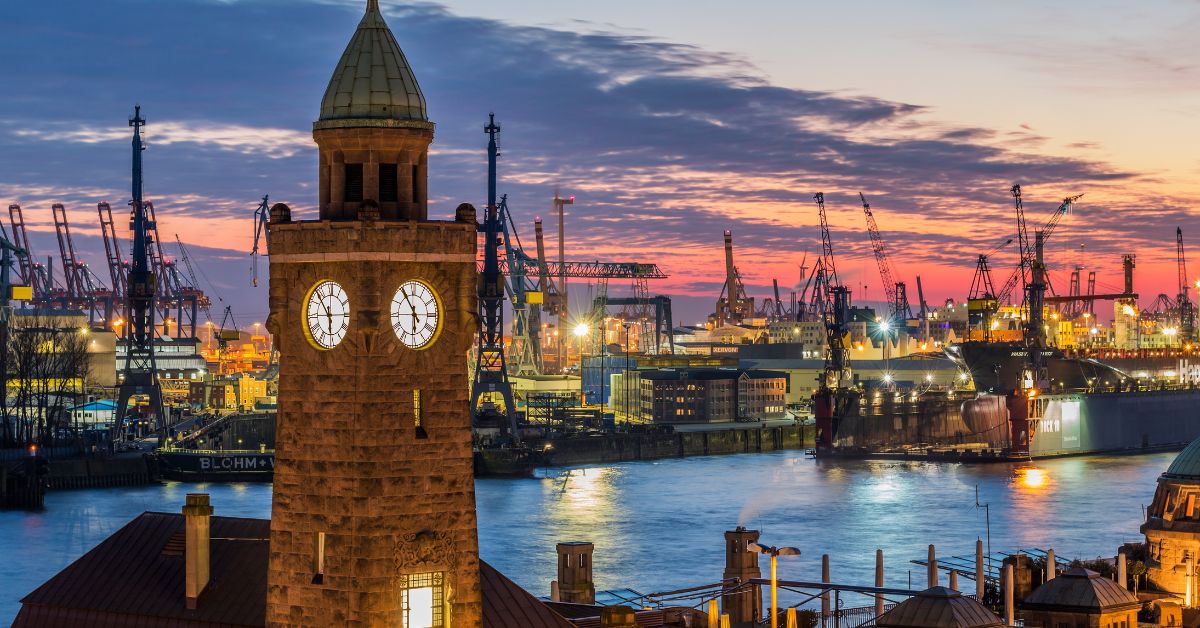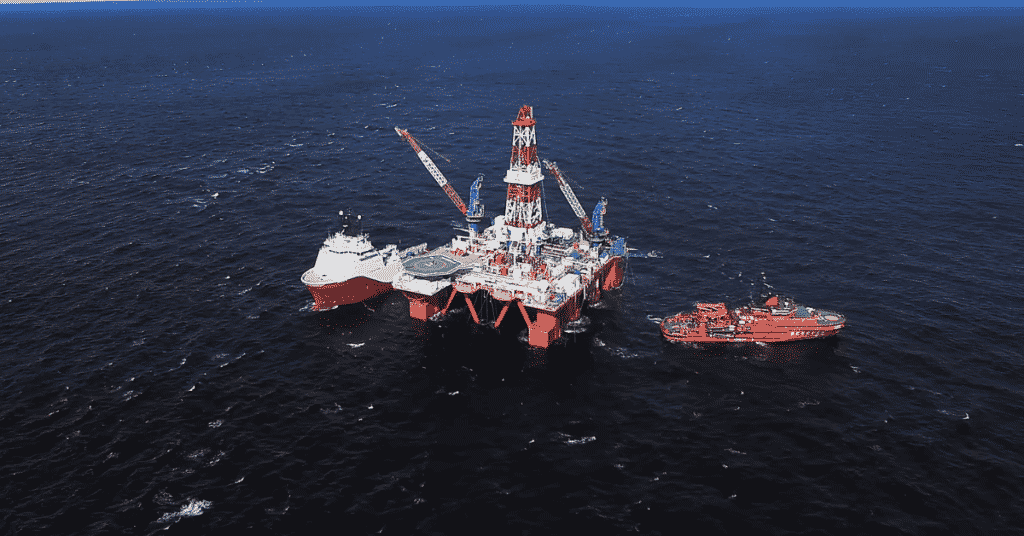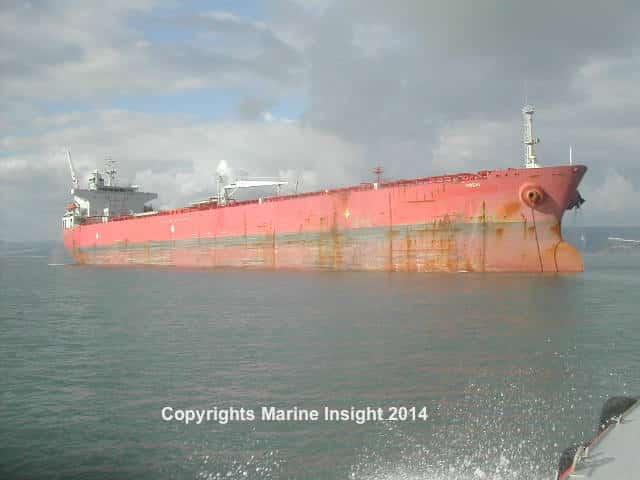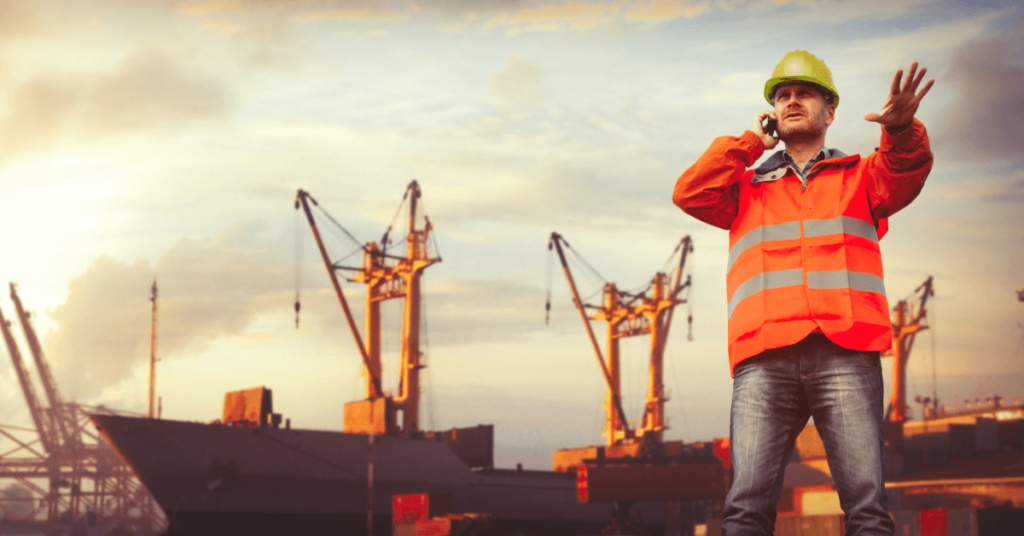Top 10 Busiest Container Terminals In Europe
Seaports connect nations and facilitate the movement of various commodities worldwide. As a powerhouse of international commerce, Europe is dependent on maritime gateways for conducting most of its trade. The European container terminals are sophisticated hubs which drive economic growth and support supply chains by handling millions of TEUs. The article explores the Top 10 Container Terminals in Europe and sheds light on their scale, importance and the volume of cargo they handle, which solidifies their status as maritime giants.
1. Port of Rotterdam
Rotterdam is the biggest seaport in Europe and the world’s largest outside of Asia, situated in and near the city of Rotterdam, in South Holland, the Netherlands.
It spans 26,000 acres and is 40 km long with 89 km of quays and 1500 km of pipelines. The port is used by more than 200 exporters and importers of fresh foods and has 3 million m2 of capacity in storage sheds.
Rotterdam Port has 122 jetties, 23 berths on buoys and 90 terminals specialising in different types of cargo.
It is the key European port for container transport, and with a transhipment of over 9,000,000 TEU, it outstrips all other ports in Europe.

Around 70% of the containers loaded and unloaded here come from or are destined for much larger European nations than the Netherlands.
With a depth of 24 m, the port has no locks. It handles bulk and general cargo, coal, ores, crude oil, LNG, biofuels, agricultural goods, containers, cars, fruits, etc.
The Port of Rotterdam is a gateway to a market of over 500 million European customers, handling more than 400 million tonnes of cargo and 10 million TEU annually.
In 2024, the Port of Rotterdam handled 13.82 million TEUs.
2. Port of Antwerp-Bruges
It is situated in Belgium within the Flanders region and was created after the merger of the Port of Antwerp and the Port of Zeebrugge.
In 2024, the Port of Antwerp-Bruges handled 13.5 million TEUs.
The Port of Antwerp-Bruges has many deep-sea container terminals, including the Europa Terminal, Noordzee Terminal, and the MSC PSA European Terminal.
These terminals, along with the others, provide a total capacity of 13.1 M TEU. The port also has facilities for breakbulk cargo, steel, forest products, RORO, etc.
The Port of Antwerp-Bruges has an annual handling capacity of 278 million tonnes of cargo. It is the second-largest port in Europe and a major hub of container traffic.
DP World Antwerp Gateway plans to invest in Automatic Stacking Cranes to increase the capacity by 1 million containers and improve the efficiency.
It is also focusing on the implementation of green technologies, like using 100% green electricity for its cranes.
3. Port of Hamburg
This facility lies on the River Elbe, 65 nm from the open sea.
It is Germany’s biggest and most important port, having more than 320 berths which handle a variety of cargoes, especially containerised cargo and petroleum products.
In 2024, the facility handled 7.8 million TEU, representing a 0.9% increase compared to 2023.
The Port of Hamburg has many multi-purpose terminals which handle project cargo, heavy cargo, RORO cargo, metals, forestry products, and citrus products.

Referred to as Germany’s Gateway to the World, this port has many container terminals.
The HHLA Container Terminal Burchardkai (CTB) is the oldest container terminal at the Port of Hamburg. It can accommodate the biggest container ships after undergoing automation and modernisation. It is operated by HHLA (Hamburger Hafen und Logistik AG).
HHLA Container Terminal Tollerort utilises straddle carriers with eco-friendly drives. It has its rail terminal.
Eurogate Container Terminal is another facility with deep-water berths, operated by Eurogate GmbH & Co. KGaA KG.
4. Port of Valencia
Valencia lies on the eastern Mediterranean coast of Spain, 350 km from Madrid.
The port boasts over 13 km of quayage and deals with furniture, timber, textiles, footwear, agricultural goods, foodstuff, fuel products, chemicals and motor vehicles, cement, tiles, marble, machines, etc.
The Port of Valencia has 12,6000m2 of yard area, 9 RORO ramps, and other specialised equipment.
It has over 4000 m of berthing space with depths of 14 m to handle the largest containers and general cargo.
Valencia Port has many container terminals, including the MSC Terminal Valencia, operated by Terminal Investment Limited, the port subsidiary of MSC. It acts as a gateway for Spanish markets and a transhipment hub for MSC in the western Mediterranean.
APM Terminals Valencia on the Levante Pier is a multipurpose terminal which focuses on container handling and is known for strong road and rail connections to the rest of Spain and for its location connecting North Africa and Europe. Noatum Container Terminal is operated by Noatum Ports.
Approximately 7,300 vessels, 65,475,000 tonnes of cargo, 4,327,000 TEU, and 475,000 passengers are handled annually by the port.
In 2024, the Port of Valencia handled 5.4 million TEUs, a notable increase of 14.2% compared to 2023.
5. Port of Bremerhaven
This port is situated on the Weser River, 32 nm from the North Sea. It is a busy port which specialises in container traffic, automotive exports and imports, fruit imports and passenger traffic.
It is divided into the Uberseehafen area and the Fischereihafen area. Except for two berths, the port is protected by locks.
Its container terminal is modern and is one of the largest in Northern Europe. The port’s construction began in 1968, just two years after the first container ship docked in Europe.
The port has expanded considerably since then, and has a quay spanning 5 kilometres, which is the longest in the world.
It also has a car terminal, a fishing harbour and a cruise terminal.
The car terminal is Europe’s biggest car park and can accommodate 95,000 cars before they are sent from here to different countries or transported elsewhere in Germany as imports.
Approximately 7,500 vessels, 53,000,000 tonnes of cargo, 4,900,000 TEU and 126,000 cruise passengers are handled annually at the port.
In 2024, the Bremerhaven container terminal handled 4.4 million TEUs.
6. Port of Piraeus
It is the largest seaport in Greece and a major hub in the Eastern Mediterranean. It is situated on the Saronic Gulf near Athens and has become one of the top container ports in the last few years.
A principal maritime waterway between Asia and Europe, the port has several specialised areas and container terminals.
The port’s container operations are managed by Piraeus Container Terminal S.A., a subsidiary of COSCO.
The terminal has 3 main piers, which handle massive volumes of transhipment cargo.
Piraeus also serves millions of passengers through its passenger terminals. It acts as the major gateway between mainland Greece to the Aegean Islands and Crete.
Additionally, the port also has terminals for other types of cargo, such as cars, and multipurpose terminals that contribute to its position as a vital maritime centre in the region.
In 2024, the Port of Piraeus’s container terminal (PCT) handled 4.22 million TEUs.
7. Port of Barcelona
This port in Spain has facilities which are divided into 3 main zones: the Old Port, the Commercial or Industrial Port and the Logistics Port.
The port handles containers, vehicles, liquid bulk, solid bulk, general cargo and passengers, thanks to its 7 cruise terminals that welcome the world’s largest cruise ships.
The port’s main container handling facilities are operated by prominent terminal operators.
For instance, the Hutchison Ports BEST (Barcelona Europe South Terminal), is known for automation and efficiency. It is one of the most advanced terminals in the Mediterranean.
The APM Terminals Barcelona lies at the entrance channel to the port and has its own rail connections and automated gate systems for smooth intermodal operations.
It also has multi-purpose terminals, including Terminal Berge, which handles both general cargo and containers.
Around 8,000 ships, 44,300,000 tonnes of cargo, 2,033,500 TEU, and over 3,800,000 cruise passengers are handled at the port annually.
In 2024, the Port of Barcelona handled approximately 3.9 million TEUs.
8. Port of Gioia Tauro
This facility lies on the eastern shore of the Gulf of Gioia in southern Italy, 18 nm northeast of the Straits of Messina.
Gioia Tauro Harbour spans 4,400 m2 and has 5125 m of docks with a water depth of 18 m.
It is the biggest Italian port for container throughput and one of the largest in Europe and the Mediterranean.
Its container operations are centred around the Medcenter Container Terminal, which offers feeder connections to several strategic ports.
The berth for transhipment of automobiles is 384 m long. The automobile terminal handles mainly Asian brands with cargo destined to and from Japan, Algeria, Turkey, India, Thailand, etc.
The port’s RORO quay is 200 m long, while its quay for commercial and passenger traffic is 920 m long.
The harbour contains 15 hectares of storage area for transhipment containers and 24 hectares for the storage of transhipment cars.
Around 3,300 vessels and 3,500,000TEU are handled annually at the facility.
In 2024, it handled 3.94 million TEUs, an 11% increase compared to 2023.
9. Port of Algeciras
Located near the Strait of Gibraltar, the port of Algeciras lies on the western side of Algeciras Bay.
It is a vital centre for international transhipments, direct container cargoes and a terminus for busy ferry and RORO traffic between North Africa and Spain.
Petroleum products are handled at an oil refinery and an SBM at the head of the bay, where the largest tankers can be accommodated.
Ports of Endesa, Campamento and Tarifa are subports of Algeciras.

Talking of the container terminals, the Pier Juan Carlos I houses the APM Terminals Algeciras.
It spans 68 hectares and has 2124 m of berths with 14 to 16 m depths. It also has 10,476 container slots and 19 quay cranes, including 10 super post-panamax cranes and over 60 rubber-tyred gantry cranes.
The port also has a Border Inspection Post approved by the EU and another wharf to handle containers and RORO. This public terminal spans 18 hectares and is operated by Acciona.
In 2024, the Port of Algeciras handled 2.39 million TEUs, a 2.67% increase compared to the same period in 2023.
10. Port of Le Havre
It is a principal facility on the English Channel at the mouth of the River Seine. Le Havre is a part of the HAROPA Port System, which was created after the merger of Rouen, Paris and Le Havre, creating a single port authority for the entire Seine region.
The port’s strategic location makes Le Havre the first deep-water port of call for ships entering the Northern European range and the last for those leaving, offering a competitive advantage in transit times.
The port can accommodate the world’s biggest container ships without tidal constraints, a major advantage over several other European ports.

Port 2000 is the largest part of the port’s container infrastructure and has several berths and terminals, including Terminal de France operated by GMP, and Oceana Gate Terminal.
Others include Europe’s Terminal and the Americas Terminal, both part of the North Terminals, which have been modernised.
There are the Normandy terminal and the Ocean terminal, which are a part of the South Terminals.
The port handles around 12,500 vessels, 68,500,000 tonnes of cargo, 2,220,000TEU and 536,700 passengers annually.
Conclusion
The busiest container terminals in Europe reflect the continent’s strategic role in global trade. While Antwerp-Bruges and Rotterdam dominate the Northern European range, ports like Valencia and Piraeus have solidified their position as vital hubs in the Mediterranean.
These terminals are not just about the sheer volume of cargo they handle; their success is a testament to investments in automation and advanced logistics, which enable them to deal with the world’s biggest vessels.
Many of these terminals are smart ports which have integrated AI, IoT, and blockchain to enhance efficiency and maritime security.
By modernising their infrastructure and embracing a greener future, Europe’s biggest ports are moving ahead with continued relevance as vital gateways of maritime trade.
Disclaimer :
The information contained in this website is for general information purposes only. While we endeavour to keep the information up to date and correct, we make no representations or warranties of any kind, express or implied, about the completeness, accuracy, reliability, suitability or availability with respect to the website or the information, products, services, or related graphics contained on the website for any purpose. Any reliance you place on such information is therefore strictly at your own risk.
In no event will we be liable for any loss or damage including without limitation, indirect or consequential loss or damage, or any loss or damage whatsoever arising from loss of data or profits arising out of, or in connection with, the use of this website.
Disclaimer :
The information contained in this website is for general information purposes only. While we endeavour to keep the information up to date and correct, we make no representations or warranties of any kind, express or implied, about the completeness, accuracy, reliability, suitability or availability with respect to the website or the information, products, services, or related graphics contained on the website for any purpose. Any reliance you place on such information is therefore strictly at your own risk.
Related Articles
Do you have info to share with us ? Suggest a correction
Subscribe To Our Daily Newsletter
By subscribing, you agree to our Privacy Policy and may receive occasional deal communications; you can unsubscribe anytime.














BE THE FIRST TO COMMENT